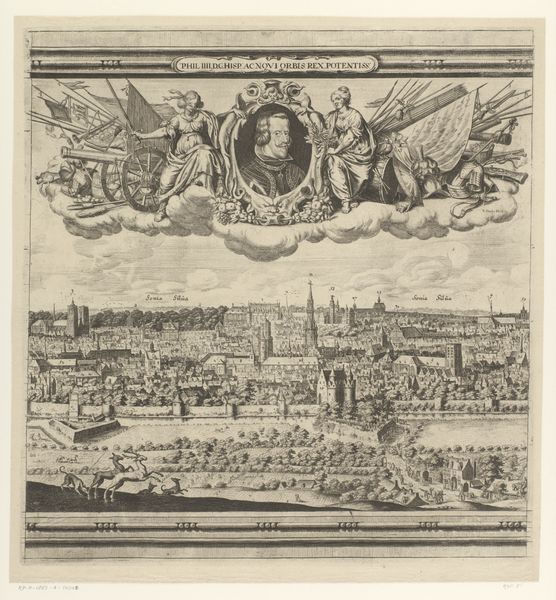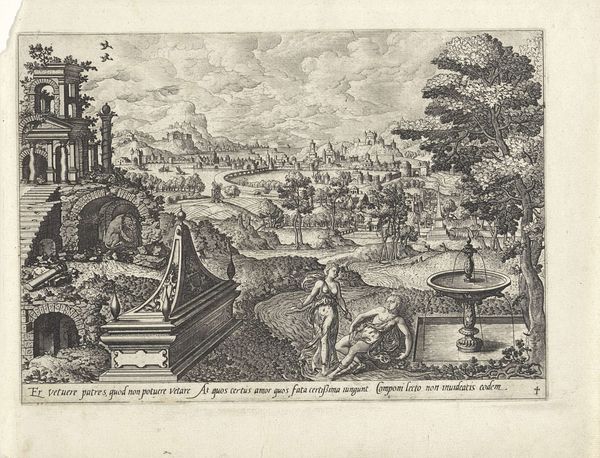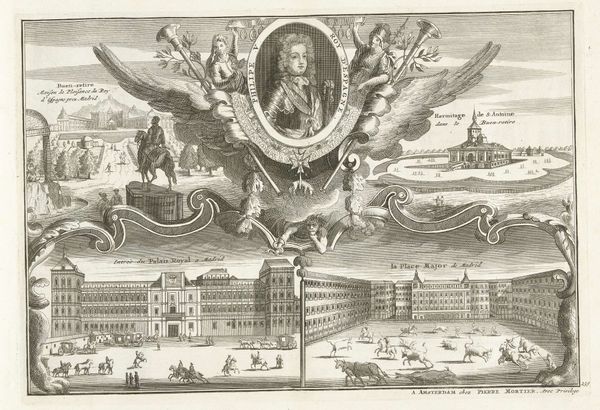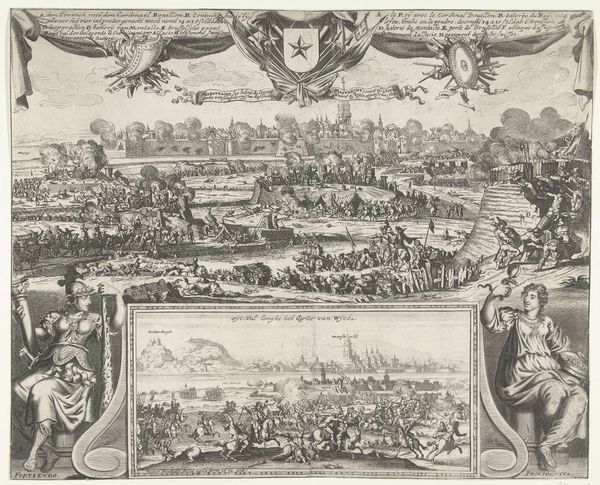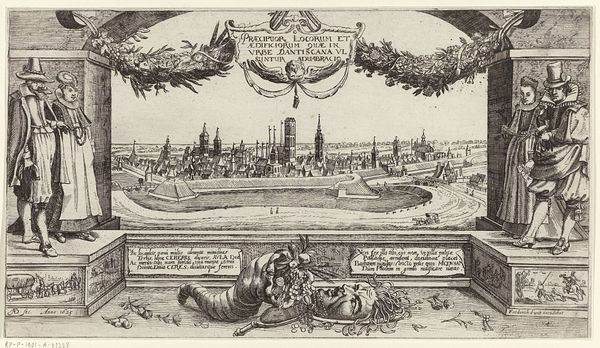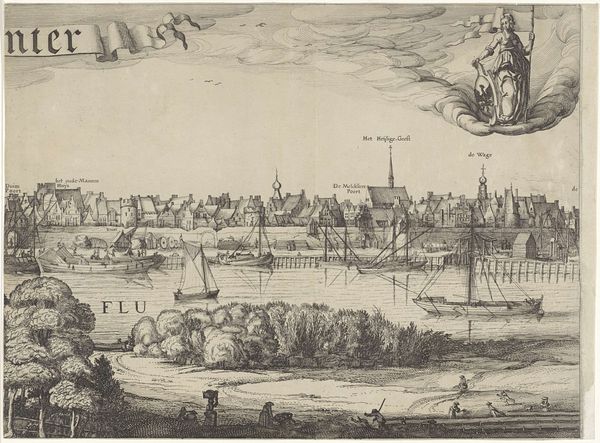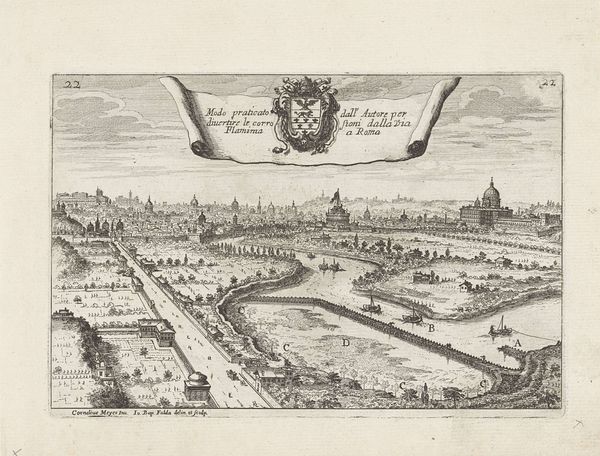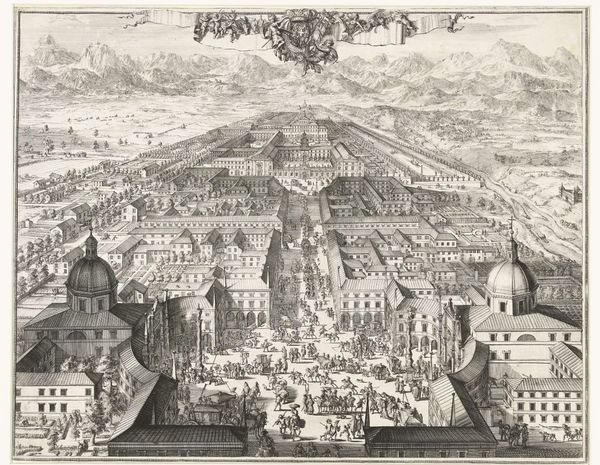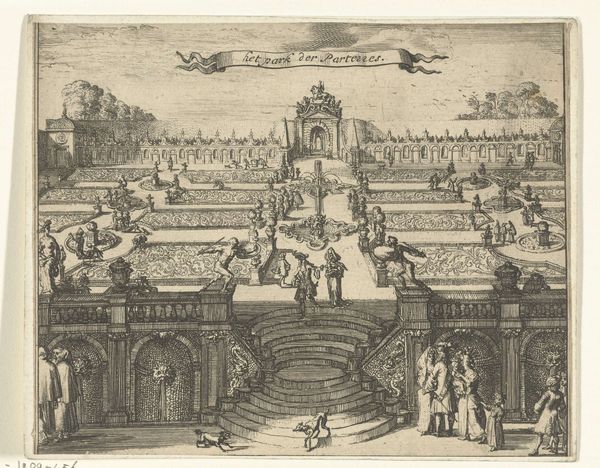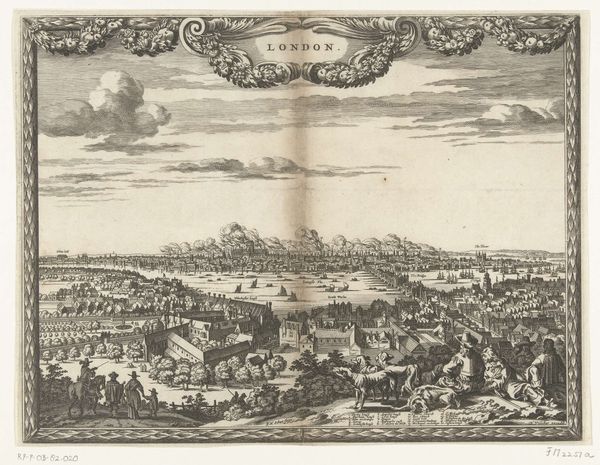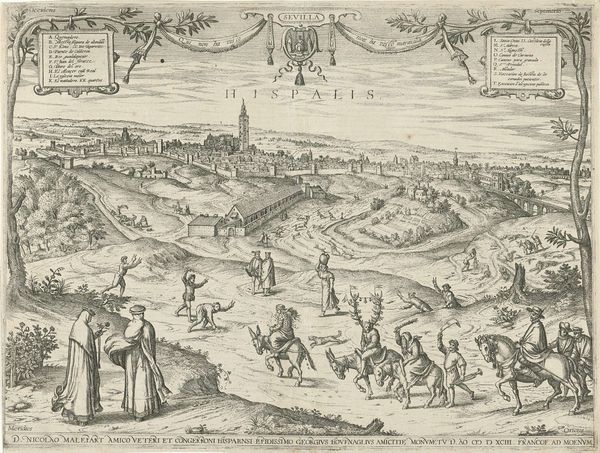
print, etching, engraving, architecture
#
baroque
# print
#
etching
#
landscape
#
cityscape
#
engraving
#
architecture
Dimensions: height 344 mm, width 460 mm
Copyright: Rijks Museum: Open Domain
Editor: This etching and engraving, titled "Parochiekerk Sint-Willibrordus, buiten Antwerpen," or Parish Church of Saint Willibrord outside of Antwerp, was created between 1659 and 1667 by Lucas Vorsterman II. It’s incredibly detailed. The texture achieved with the engraving process seems very precise and deliberate, creating this feeling of meticulous control, but there's still a bit of fantasy in it. What do you see when you look at this? Curator: Immediately, I see the labor. Look at the intricate work involved in both etching and engraving on the same plate! The social context is right there, interwoven into the production itself. Vorsterman likely employed apprentices, dividing the tasks. Each line, each tiny dot, is a testament to someone’s work, whether master or journeyman. What does the division of labor tell us about the hierarchies of art production at the time? Editor: I hadn't considered that, actually. So you are suggesting we look beyond Vorsterman’s signature and think about all the other, possibly unnamed, artisans who helped bring this image to life? Curator: Exactly! Think about the availability and cost of copper plates, the tools needed for engraving, and the networks required to distribute prints like these. Consider the materials and processes, and how that dictated the affordability and availability of the artwork, and therefore the accessibility of the image of the church, to a wider audience. Does this expand your interpretation? Editor: It definitely does! By looking at the print through the lens of production, we gain a far better sense of the whole artistic ecosystem. Thank you! Curator: My pleasure. And now, think of how these prints themselves were bought, sold, and displayed—part of a vast cycle of material culture.
Comments
No comments
Be the first to comment and join the conversation on the ultimate creative platform.

